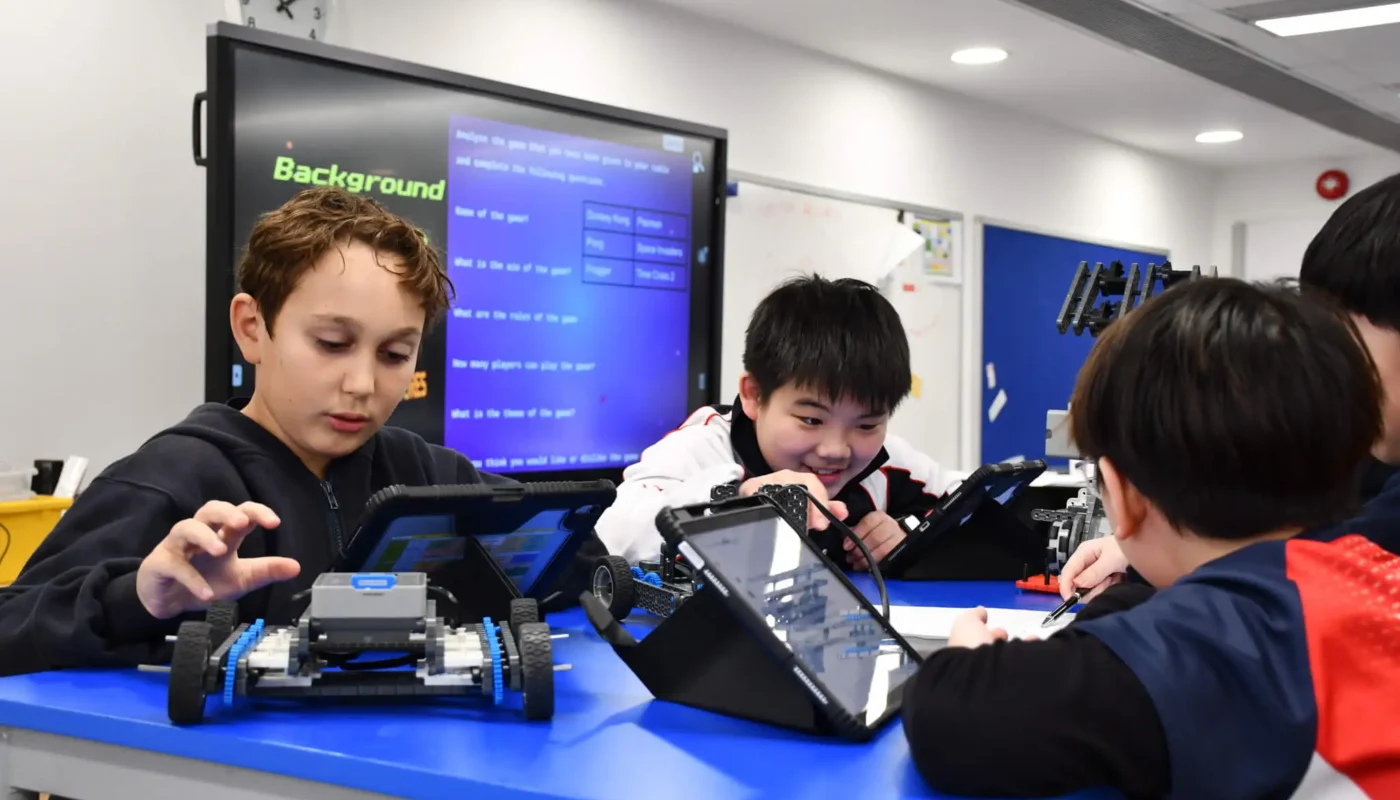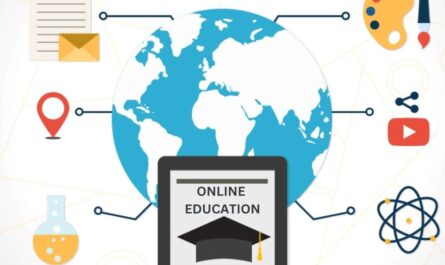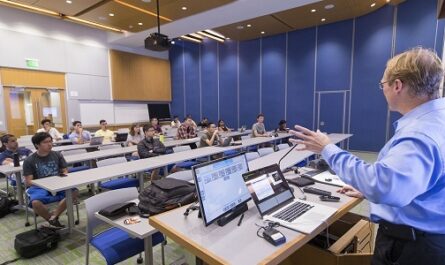Innovation has turned into a basic piece of present day life, molding how we work, convey, and learn. Its job in training has become progressively huge, particularly lately. As schools and colleges coordinate different mechanical devices and stages into their educational plans, grasping the job of innovation in training — alongside its advantages, difficulties, and effects on understudies — is fundamental for establishing compelling and fair learning conditions.
The Growing Importance of Technology in Education
Transforming Traditional Classrooms
Innovation has reformed customary homerooms, transforming them into dynamic learning spaces. Computerized devices like intuitive whiteboards, tablets, and instructive applications have upgraded training strategies and offered understudies better approaches to draw in with content. Innovation upholds assorted opportunities for growth, taking care of various learning styles and inclinations. For example, mixed media introductions and instructive recordings make complex ideas more available and locking in.
Expanding Access to Education
Innovation can expand admittance to instruction by separating geological and monetary obstructions. Online courses, e-learning stages, and virtual homerooms empower understudies from remote or underserved regions to participate in top notch training. This democratization of learning assets guarantees more people can acquire information and abilities already too far.
Benefits of Technology in Education
Enhancing Learning Experience
- Personalized Learning: One of the most eminent advantages of innovation is its help for customized learning. Versatile learning programming utilizes calculations to fit instructive substance to every understudy’s requirements, permitting them to advance at their own speed. This individualized methodology helps address holes in understanding and takes care of various learning styles, prompting a more compelling instructive experience.
- Interactive Learning: Innovation advances intelligent and experiential learning. Apparatuses like computer generated experience (VR) and increased reality (AR) empower understudies to investigate reproductions and vivid conditions, upgrading how they might interpret complex subjects. For instance, VR can ship understudies to verifiable occasions or far off planets, offering an involved opportunity for growth past conventional reading material.
- Access to Vast Resources: The web offers an abundance of assets past conventional course books. Understudies can get to scholastic diaries, instructive recordings, intelligent reproductions, from there, the sky is the limit. This broad cluster of data upholds further exploration and encourages interest, permitting understudies to completely dig into subjects more.
Improving Collaboration and Communication
- Enhanced Collaboration: Technology facilitates collaboration among students, regardless of their location. Tools such as Google Docs, online discussion forums, and project management apps enable students to work together on projects, exchange ideas, and provide peer feedback. This collaborative environment cultivates teamwork and communication skills essential for success in the modern workforce.
- Effective Communication: Teachers and students can communicate more efficiently through various technological tools. Email, messaging apps, and learning management systems (LMS) streamline communication, making it easier for students to seek help, receive feedback, and stay updated on their coursework. This accessibility enhances the overall educational experience and supports timely intervention when needed.
Facilitating Teacher Development
- Professional Development: Technology provides opportunities for teachers to engage in professional development and keep up with educational trends. Online courses, webinars, and educational communities offer resources for teachers to learn new skills, explore innovative teaching strategies, and share best practices with peers.
- Efficient Administrative Tasks: Technological tools can simplify administrative tasks such as grading, attendance tracking, and curriculum planning. Learning management systems and educational software can automate these processes, allowing teachers to focus more on instruction and student interaction.
Challenges of Technology in Education
Addressing the Digital Divide
- Equity and Access: Despite its benefits, technology can exacerbate educational inequalities. Students from low-income families or underserved communities may lack access to necessary devices or reliable internet connections. This digital divide can hinder their participation in online learning and access to educational resources, perpetuating existing disparities in educational outcomes.
- Technology Integration: Effective technology integration requires significant investment in infrastructure, training, and support. Schools with limited resources may struggle to provide the necessary tools and training for both students and teachers, leading to uneven adoption and use of technology.
Ensuring Data Privacy and Security
- Privacy Concerns: Increased technology use in education raises concerns about data privacy and security. Educational technology platforms often collect and store personal information about students, including academic performance and behavioral data. Ensuring this data is protected from breaches and misuse is crucial for maintaining trust and safeguarding student information.
- Cybersecurity Risks: Reliance on digital tools introduces the risk of cyber threats. Schools must implement robust cybersecurity measures to protect their networks and data from hacking, phishing, and other cyber-attacks. Educating students and staff about online safety practices is also vital for mitigating these risks.
Balancing Screen Time and Well-Being
- Screen Time Concerns: Excessive screen time can negatively impact students’ health and well-being. Issues such as eye strain, poor posture, and reduced physical activity can result from prolonged use of digital devices. Educators and parents need to monitor and manage screen time to maintain a healthy balance between technology use and other activities.
- Mental Health Impact: Technology use can also affect students’ mental health. Social media, online interactions, and the pressure to maintain a digital presence can contribute to stress and anxiety. Schools and parents should be aware of these potential impacts and offer support to help students navigate the challenges of the digital age.
The Impact of Technology on Students
Academic Achievement
Technology can positively influence academic achievement by providing personalized learning experiences, enhancing engagement, and offering access to a wealth of resources. Students who use technology effectively often show improved performance and a deeper understanding of subject matter. However, the impact of technology depends on how well it is integrated into the curriculum and supported by educators.
Development of 21st-Century Skills
Technology prepares students for the demands of the modern workforce by fostering essential 21st-century skills such as digital literacy, critical thinking, problem-solving, and collaboration. These skills are crucial for success in a rapidly evolving job market, where technological proficiency and adaptability are highly valued.
Fostering Lifelong Learning
The integration of technology in education encourages a culture of lifelong learning. Students develop skills to seek out and evaluate information, use digital tools effectively, and engage with new technologies. This mindset of continuous learning and adaptation is essential for navigating the ever-changing landscape of the modern world.
Conclusion
Technology plays a crucial role in modern education, offering numerous benefits such as personalized learning, enhanced collaboration, and expanded access to resources. However, it also presents challenges related to equity, data privacy, and screen time management. As technology continues to evolve, it is vital for educators, policymakers, and communities to address these challenges and leverage technology’s full potential to create an inclusive and effective educational environment. By balancing the advantages and addressing the obstacles, we can ensure that technology serves as a powerful tool for enhancing education and preparing students for a successful future.



